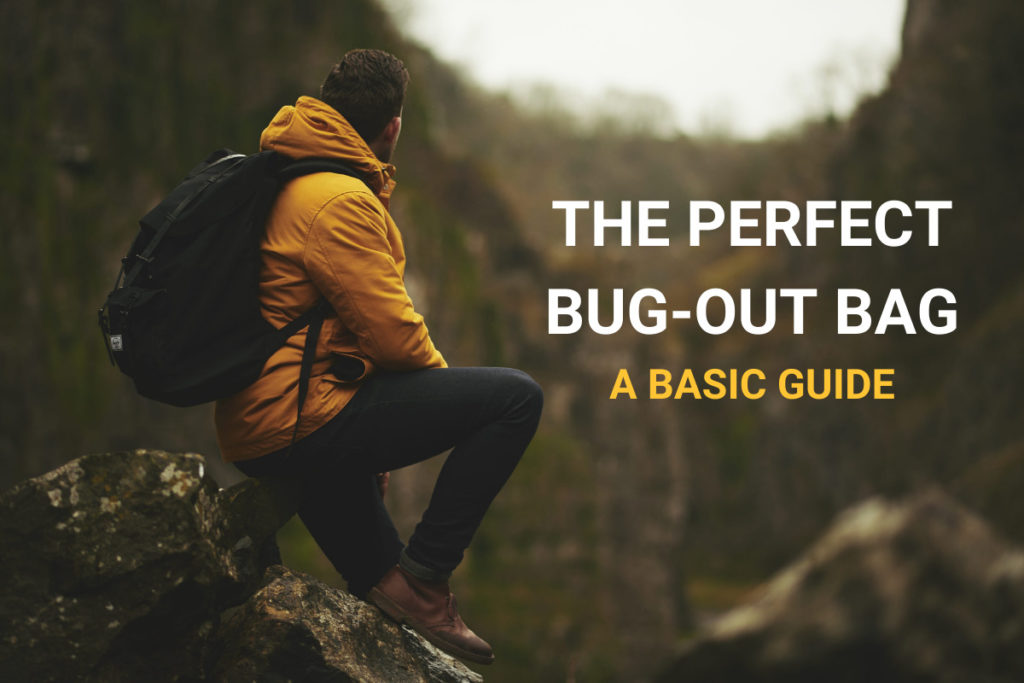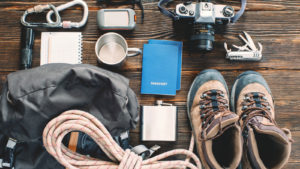Everyone should have a bug-out bag stashed somewhere handy. Good places to store it are in the trunk of your car, at work, in the pantry, or in your cupboard. Anywhere that’s readily available for you to grab it and go, and that counts for the entire family.
Think of a bug-out bag as a type of insurance. They’re meant to carry everything you need to survive should you have zero time to pack. That’s when this little gem becomes a necessity.
Time to abandon ship? No worries. You’re covered. But what should such a bag contain?
Here is a list of the basics:
- Three days’ worth of food, but be careful. You’ll want to pack items that are both high in calories and protein, compact, light-weight, and non-perishable. Think of protein bars, trail mix, nuts, dried fruit, granola, nut butter, and freeze-dried meals.
- Eating utensils and a collapsible cup/bowl.
- Water. This is non-negotiable. The average person needs around three liters of water per day, especially if they’re active, but that doesn’t mean you should carry so much weight. Rather opt for three liters of water in a quality steel container and a method to purify more such as a LifeStraw.
- A change of clothes. This might not sound vital, but it could be should you get wet or cold, and clean socks are a must if you want to prevent blisters. But, keep it to a minimum, mainly undergarments. Rather try to wear a durable pair of pants and jacket from the get-go.
- Basic personal hygiene items such as soap, toothpaste, a toothbrush, comb, wet wipes, a razor, a towel, and toilet paper. Again, keep it to a minimum. You do not need your hair straightener, make-up, or perfume. Trust me. (Don’t forget the tweezers, though.)
- A portable cell phone charger, preferably solar. This will keep you in contact with the world, assuming the networks are operational.
- A portable, battery-operated AM/FM radio should the networks be down, plus it’s a good-to-have anyway.
- A good quality flashlight.
- Extra batteries.
- Waterproof matches and a bic lighter. (Those things never die!)
- A first-aid kit and any chronic medication you might need.
- A whistle or a bell.
- A sewing kit.
- Maps. The kind you can actually hold in your hand, not Google Maps.
- A roll of duct tape. (You can do just about anything with duct tape!)
- A length of paracord and zip ties. Their uses are innumerable.
- A survival knife.
Final Thoughts
Now, these are just the basics. Depending on your environment, you might need extra items. For instance, if it’s cold and rainy, a raincoat and poncho would be a good option and a piece of tarp. If it’s hot and dry, you could stick to a bedroll and an emergency blanket. A hatchet or machete would make a good addition to your supplies, as would a small toolkit. Always remember to wear good shoes and to use the best pack you can afford. Those two items will take you far. Above all, stay alert, stay alive, and use your head.
Be a survivor.
This blog post was written by Baileigh Higgins, author of numerous apocalyptic works. You can check out her books on her website at https://www.baileighhiggins.com.




